演算法作業 week 8
第一題
題目

tree search

0: U.B. = -(7 + 10) = -17, L.B. = -(7 + 10 + 4 * (5 / 8)) => -19
1: U.B. = -(7 + 10) = -17, L.B. = -(7 + 10 + 4 * (5 / 8)) => -19
2: U.B. = -(10 + 4) = -14, L.B. = -(10 + 4 + 4 * (7 / 10)) => -16
3: U.B. = -(7 + 10) = -17, L.B. = -(7 + 10 + 4 * (5 / 8)) => -19
4: U.B. = -(7 + 4 + 4) = -15, L.B. = -(7 + 4 + 4 + 4 * (6 / 12)) => -17
第二題
題目

select S
g(A) = 1, h(A) = min(4, 11) = 4, f(A) = 1 + 4 = 5
g(B) = 2, h(B) = min(9, 5, 16) = 5, f(B) = 2 + 5 = 7
g(C) = 5, h(C) = min(3) = 3, f(C) = 5 + 3 = 8
- select A
g(D) = 1 + 4 = 5, h(D) = min(18) = 18, f(D) = 5 + 18 = 23
g(E) = 1 + 11 = 12, h(E) = min(13) = 13, f(E) = 12 + 13 = 25
- select B
g(D) = 2 + 9 = 11, h(D) = min(18) = 18, f(D) = 11 + 18 = 29
g(E) = 2 + 5 = 7, h(E) = min(13) = 13, f(E) = 7 + 13 = 20
g(F) = 2 + 16 = 18, h(F) = min(2) = 2, f(F) = 18 + 2 = 20
- select C
g(F) = 5 + 3 = 8, h(F) = min(2) = 2, f(F) = 8 + 2 = 10
- select F
g(T) = 8 + 2 = 10 (T is selected, terminate)
- T is goal node
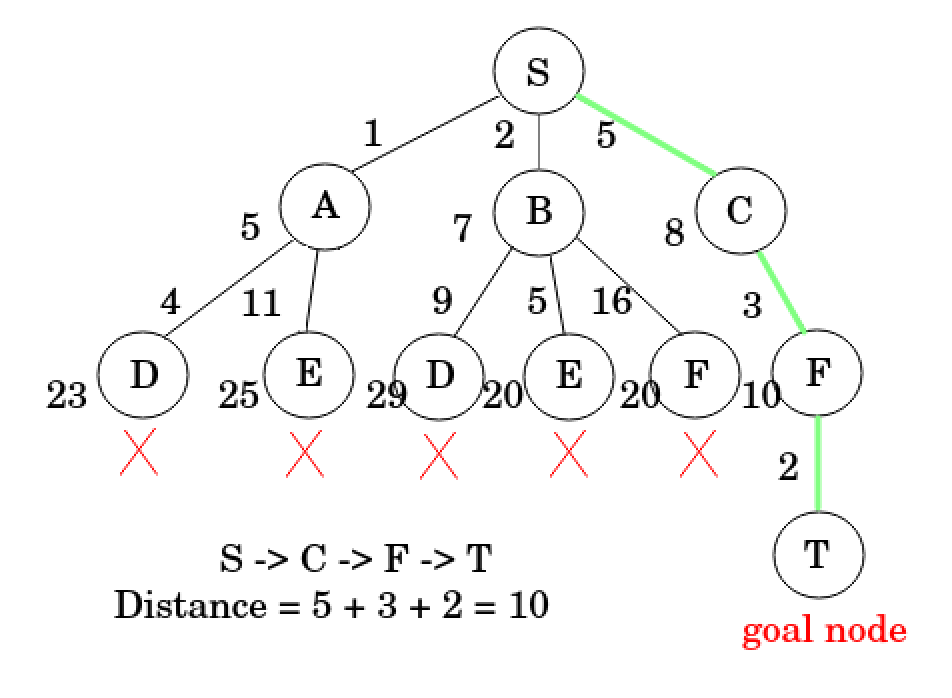
第三題
題目

horizontal
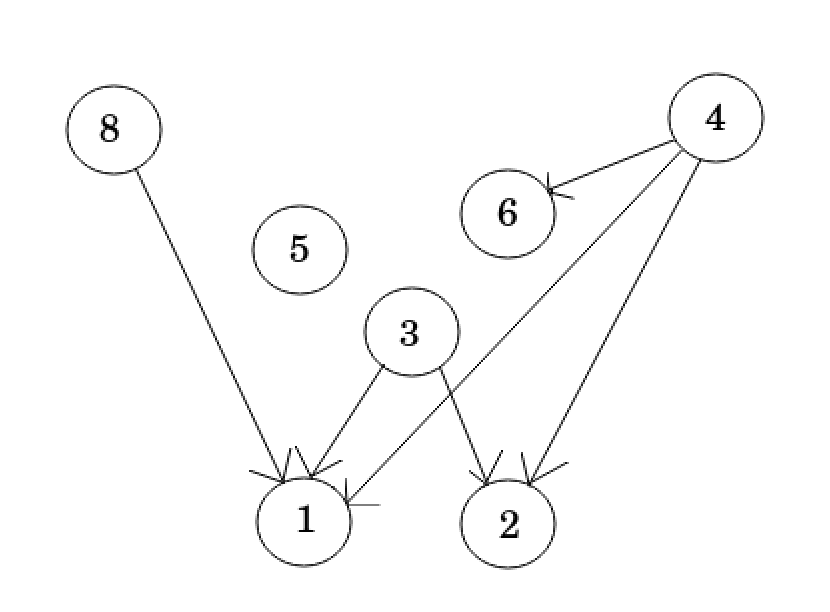
vertical
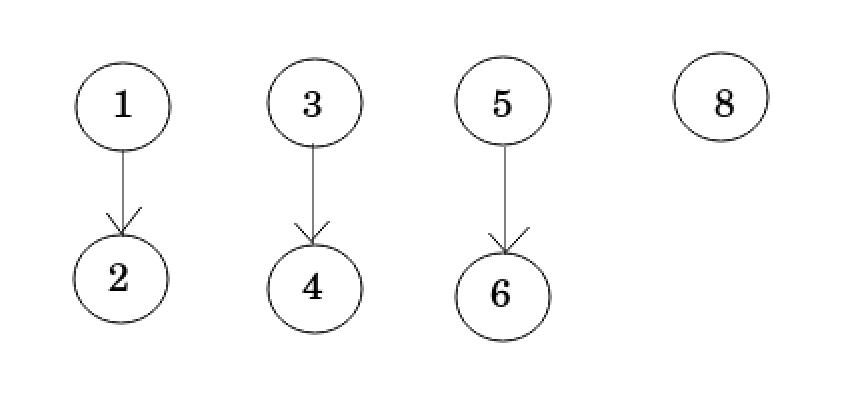
Maximum cliques
{8, 1}, {3, 1}
local density(A* algorithm)
- select root
{8, 1}: 1, 2, 3, 3, 3, 3, 3, 3, 2, max = 3
{3, 1}: 1, 2, 3, 3, 3, 3, 3, 3, 2, max = 3- select {8,1} first
{3, 2}: 1, 2, 2, 2, 2, max = 2 {5}: 1, 2, 2, 2, 2, 2, 1, max = 2
- and select {3, 1}
{4, 2}: 1, 2, 3, 3, 3, 3, 2, max = 3 {5}: 1, 2, 2, 2, 2, 2, 1, max = 2 {8}: 1, 2, 2, 3, 3, 2, max = 3
- select {3, 2}
{6, 4}: 1, 1, max = 1 {5}: 1, 1, 1, 1, max = 1
- select {6, 4} (快放完)
{5}: 1, max = 1
A* algorithm(best first search)
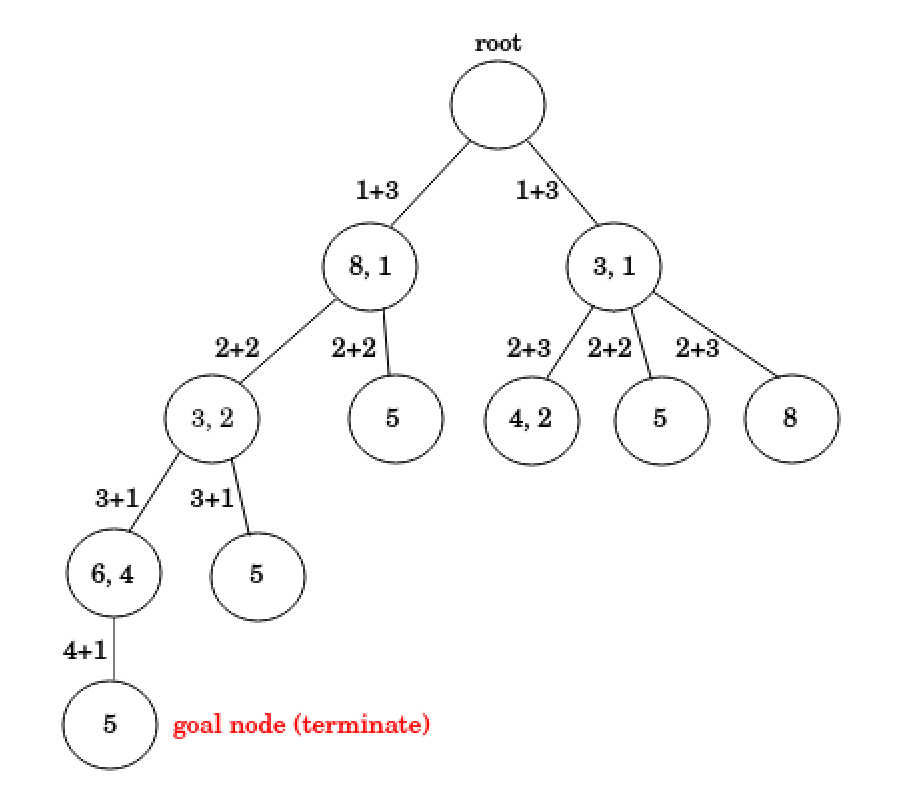
result
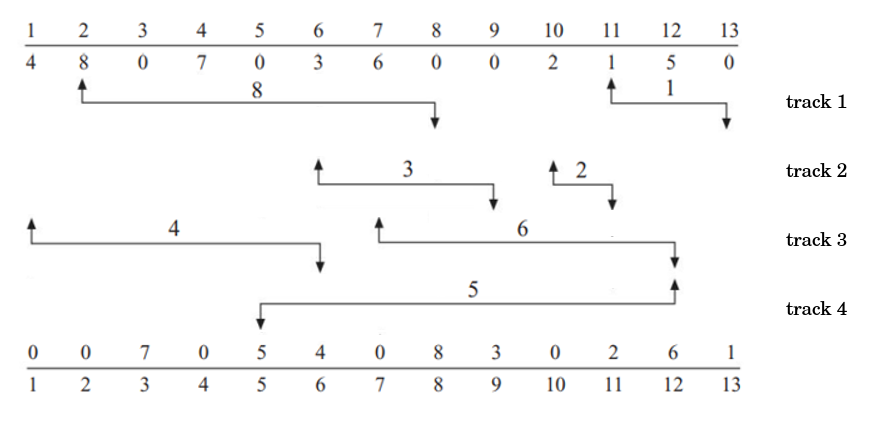
第四題
- BFS
class Solution:
def mergeTrees(self, root1: Optional[TreeNode], root2: Optional[TreeNode]) -> Optional[TreeNode]:
def exist(node):
return node is not None
if exist(root1) == False:
return root2
if exist(root2) == False:
return root1
queue = [root1, root2]
while queue:
first = queue.pop(0)
second = queue.pop(0)
if exist(first) and exist(second):
first.val += second.val
if exist(second.left):
if exist(first.left) == False:
first.left = second.left
else:
queue.append(first.left)
queue.append(second.left)
if exist(second.right):
if exist(first.right) == False:
first.right = second.right
else:
queue.append(first.right)
queue.append(second.right)
return root1
- DFS
class Solution:
def mergeTrees(self, root1: Optional[TreeNode], root2: Optional[TreeNode]) -> Optional[TreeNode]:
def exist(node):
return node is not None
if exist(root1) == False and exist(root2) == False:
return None
elif exist(root1) == False:
root = root2
root.left = self.mergeTrees(None, root2.left)
root.right = self.mergeTrees(None, root2.right)
elif exist(root2) == False:
root = root1
root.left = self.mergeTrees(root1.left, None)
root.right = self.mergeTrees(root1.right, None)
else:
root = TreeNode(root1.val + root2.val)
root.left = self.mergeTrees(root1.left, root2.left)
root.right = self.mergeTrees(root1.right, root2.right)
return root
- 題目連結:617. Merge Two Binary Trees - LeetCode
- LeetCode 執行結果:
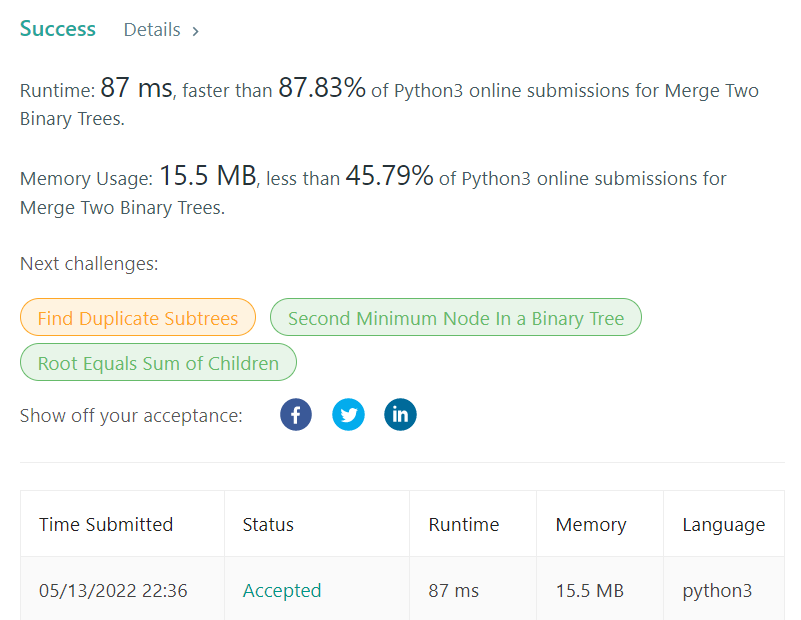
- 語言:Python
- 花費時間:一小時(BFS)、20 分鐘(DFS)
- 完成程度:參考別人
- 其他:
root1當基底,把root2的該節點加入到root1,若是root1該節點不存在,則替代成root2的節點; 若是root2該節點不存在,root1該節點就不採取動作;若兩個root該節點都不存在,則節點為None。 而遍歷的方式則採用queue這個資料結構來協助。
第五題
class Solution:
def lcaDeepestLeaves(self, root: Optional[TreeNode]) -> Optional[TreeNode]:
def calLCA(root, a, b):
if root is None:
return None
if root.val == a.val or root.val == b.val:
return root
left = calLCA(root.left, a, b)
right = calLCA(root.right, a, b)
if left and right:
return root
elif left:
return left
elif right:
return right
left_most = None
right_most = None
queue = [root]
while queue:
length = len(queue)
for i in range(length):
node = queue.pop(0)
if i == 0:
left_most = node
if i == length - 1:
right_most = node
if node.left:
queue.append(node.left)
if node.right:
queue.append(node.right)
return calLCA(root, left_most, right_most)
- 題目連結:1123. Lowest Common Ancestor of Deepest Leaves - LeetCode
- LeetCode 執行結果:
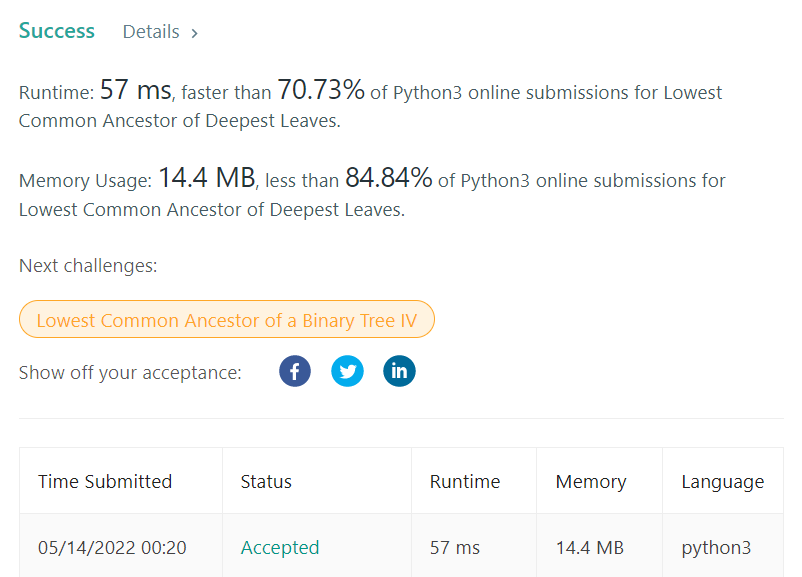
- 語言:Python
- 花費時間:一小時
- 完成程度:參考別人
- 其他:這題是使用
BFS遍歷,加上DFS計算LCA(Lowest Common Ancestor),其中的巧思是找到leftmost與rightmost的節點帶入calLCA()計算共同節點是哪個。
本週心得
畫圖好累…
果然 NP-Complete 的問題解法都很沒效率 = =
至於程式 BFS iterative 的部分真的很難想,連觀摩別人的程式碼,都要花很久的時間才能理解。